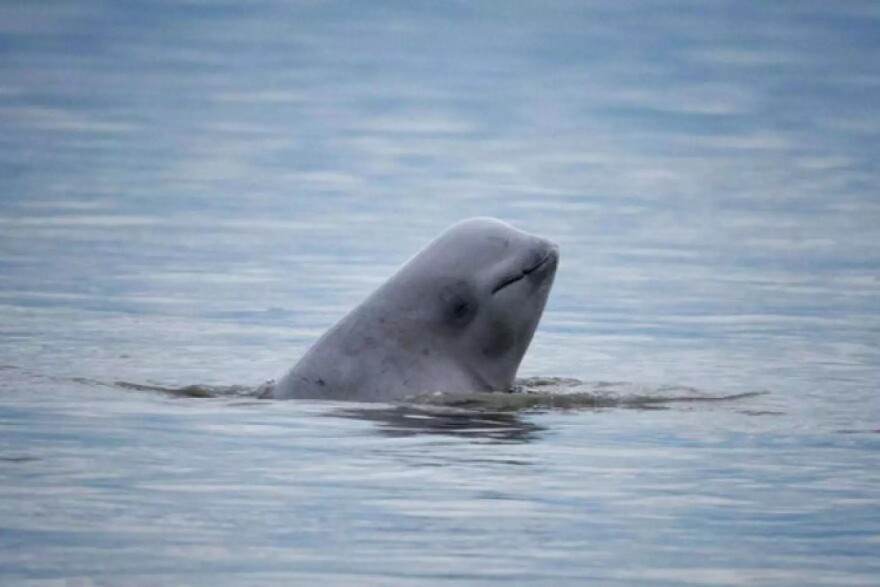Low birth rates are likely contributing to the decline in the population of beluga whales in Cook Inlet, according to a study published this week.
Gina Himes Boor is a research professor in the ecology department at Montana State University and the lead author on the study. She said this is the first time researchers have been able to estimate birth rates for the species, and she said those lower-than-expected rates are likely a big factor in the population’s overall downfall.
“Getting that demographic piece in place and understanding that helps us to get closer to identifying what might be the external factors that are limiting their recovery,” she said.
The study is the latest piece in a puzzle scientists are trying to solve about why the endangered population of Cook Inlet belugas is not rebounding.

Himes Boor and her team used photos of individual belugas to chart trends in the population as a whole. And what they found was whales weren’t giving birth at rates they would expect from healthier populations. She said while belugas in healthy populations gave birth every two to three years, Cook Inlet belugas were reproducing every four.
Rebecca Taylor from the USGS Alaska Science Center was another author on the study. She said researchers also used the photo data to measure survival rates in the population, which they also found were lower than expected.
“It is really important to understand birth and death rates for endangered populations like the Cook Inlet belugas,” Taylor said.
Himes Boor said the next step in research will be pinning down the specific factors contributing to low beluga birth rates and higher death rates. “Because this population is declining and its prospects aren't looking great,” she said.
In the next year, she said researchers will look at data that extends through 2022.
Himes Boor and her team used photos from the Cook Inlet Beluga Whale Photo-ID Project, led by Tamara McGuire, to study the population. That project also takes photos from citizen scientists. You can submit photos to the project at cookinletbelugas.com.






